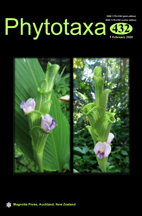Abstract
Obligate parasitic plant species from the Orobanchaceae family belong to the most critical genera of world flora. Due to their strongly reduced vegetative organ architecture, there arise many difficulties and mistakes in species identification, and extra characteristics of systematic importance are required. Seed micromorphology is a highly informative taxonomic criterion that helps to resolve ambiguities in plant taxonomy and evolution, and has proved to be a valuable complementary tool for Orobanchaceae species identification. In this study, seeds of 43 holoparasitic species from the Cistanche, Diphelypaea, Orobanche and Phelipanche genera collected in the Caucasus were subjected to micromorphological analysis. The Caucasus is one of the most important centres of world biodiversity, with many endangered and endemic parasitic plants. Twenty two quantitative/qualitative micromorphological seed parameters were analysed using stereo ZOOM, confocal scanning laser (CLSM) and scanning electron (SEM) microscopy. Three types of seed were established based on periclinal wall ornamentation: 1) clearly pitted sculpturing in all Cistanche, Diphelypaea, and most Orobanche seeds; 2) fibrillar and veined sculpturing in Phelipanche seeds; and 3) smooth, granular or rugged (very rarely visibly pitted) outer periclinal wall in O. coerulescens and O. colorata seeds. However, CLSM, used in present studies for Orobanchaceae seeds for the first time, revealed more details of wall lignification and ornamentation invisible in SEM images. The best micromorphological characteristics for species identification are the type of ornamentation of the periclinal wall, the width of anticlinal wall, the character of perforation, perforation length and width, the fibrillar character, and fibrillar and vein width. A comparison of the main characteristics distinguishing the seeds of Orobanchaceae is also presented and discussed.

